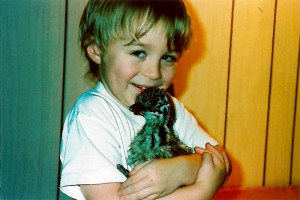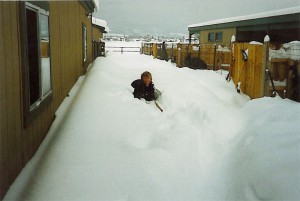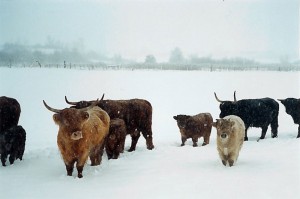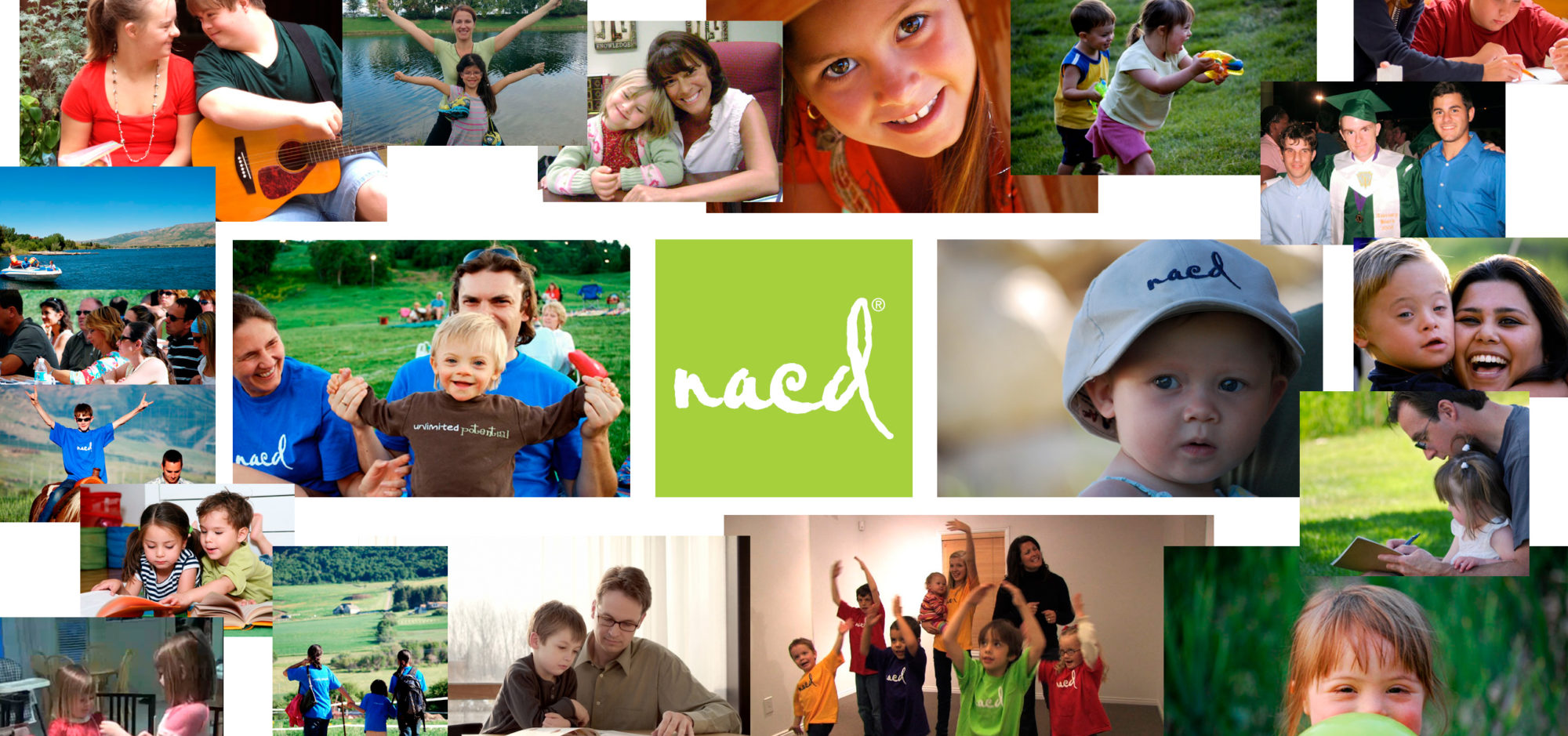 Yep, it’s true. Those are emus; they are in the Utah mountain snow, not in the Australian outback; and that little guy is my son, Laird, who was about five at the time. He was shoveling paths to the bird pens so we could get them food and water and hopefully gather their eggs before they froze. We really liked collecting those big green eggs, which we incubated and hopefully hatched into chicks. Back then those chicks were worth about $5,000 each. (I bet you thought I was crazy. As they say, “like a fox.”) In one of the chapters in my life I was a child developmentalist/rancher and raised emus and other exotic critters in the mountains of Utah. It was great fun, a family learning experience, adventure, a particularly great opportunity for my younger son Laird and fortunately generally financially rewarding, helping to support my work with kids. Laird learned about chores early and loved not only being a “helper,” but learning to assume responsibility and not to fear big tasks–Herculean tasks.
Yep, it’s true. Those are emus; they are in the Utah mountain snow, not in the Australian outback; and that little guy is my son, Laird, who was about five at the time. He was shoveling paths to the bird pens so we could get them food and water and hopefully gather their eggs before they froze. We really liked collecting those big green eggs, which we incubated and hopefully hatched into chicks. Back then those chicks were worth about $5,000 each. (I bet you thought I was crazy. As they say, “like a fox.”) In one of the chapters in my life I was a child developmentalist/rancher and raised emus and other exotic critters in the mountains of Utah. It was great fun, a family learning experience, adventure, a particularly great opportunity for my younger son Laird and fortunately generally financially rewarding, helping to support my work with kids. Laird learned about chores early and loved not only being a “helper,” but learning to assume responsibility and not to fear big tasks–Herculean tasks.
 One of my favorite memories involves the building of our home and developing our ranch. Shortly after we moved into our new home, two landscapers were coming up to put in a sprinkler system around the house. They would arrive early, like 6:30 a.m., to begin work. When they arrived Laird would be waiting for them with his little wheelbarrow and shovel, ready for work; and work he did. I have no doubt that those guys worked harder and faster than ever because they had this little kid pushing right beside them, never wanting a break. When the system was almost complete, the last guy on the job was putting the final pieces together in the in-ground control box. Three-year-old Laird couldn’t help with that task, so he on his own accord went and found his little folding chair, one of his reading books (“Bibs”), set the chair up next to where the guy was working, sat there, and read the entire book to him. If he couldn’t help, he could entertain.
One of my favorite memories involves the building of our home and developing our ranch. Shortly after we moved into our new home, two landscapers were coming up to put in a sprinkler system around the house. They would arrive early, like 6:30 a.m., to begin work. When they arrived Laird would be waiting for them with his little wheelbarrow and shovel, ready for work; and work he did. I have no doubt that those guys worked harder and faster than ever because they had this little kid pushing right beside them, never wanting a break. When the system was almost complete, the last guy on the job was putting the final pieces together in the in-ground control box. Three-year-old Laird couldn’t help with that task, so he on his own accord went and found his little folding chair, one of his reading books (“Bibs”), set the chair up next to where the guy was working, sat there, and read the entire book to him. If he couldn’t help, he could entertain.
(Isn’t amazing that our educational system can take little children who love working and love learning and in twelve years teach them that “work” is a four letter work and to hate learning anything? I think the system is broken–how about you?)
 Laird happily requested more and more jobs on the ranch. The young emus needed to be exercised to strengthen their legs, so Laird would run up and down the chick pens with these three-four foot tall chicks/creatures often towering over him. (If you haven’t seen an emu up close, they have big, clawed feet and look more like velociraptors than birds.) When he was a bit older he would be out before daylight in below zero weather, dragging forty-pound bails of hay out to our Scottish Highland cattle. He did these chores willingly, always looked for more, and was justifiably proud of himself and his achievements. Teaching our children to take care of themselves is huge. Raising children to be adults requires more than teaching them the “three Rs;” we need to teach them to be “highly capable.” I know of families whose children don’t know how to do their laundry, buy or prepare food, or clean their living space; who don’t understand the value of money nor how to be responsible; and yet they are sending them off to expensive colleges. Their odds of success are not great.
Laird happily requested more and more jobs on the ranch. The young emus needed to be exercised to strengthen their legs, so Laird would run up and down the chick pens with these three-four foot tall chicks/creatures often towering over him. (If you haven’t seen an emu up close, they have big, clawed feet and look more like velociraptors than birds.) When he was a bit older he would be out before daylight in below zero weather, dragging forty-pound bails of hay out to our Scottish Highland cattle. He did these chores willingly, always looked for more, and was justifiably proud of himself and his achievements. Teaching our children to take care of themselves is huge. Raising children to be adults requires more than teaching them the “three Rs;” we need to teach them to be “highly capable.” I know of families whose children don’t know how to do their laundry, buy or prepare food, or clean their living space; who don’t understand the value of money nor how to be responsible; and yet they are sending them off to expensive colleges. Their odds of success are not great.
I will be writing an article for our NACD Journal and newsletter shortly talking about the concept and perception that we need to help our children become “highly capable.” This is a very important concept for all of our kids, not just our “typical” kids.
(Laird is now 24, working on completing his degrees, and functions as the Chief Operating Officer of NACD. Laird spent last summer in Paris, studying international marketing on a full scholarship.)
One last thought: When it comes to doing things in and around your house, if your kids could do it, then perhaps they should do it.
